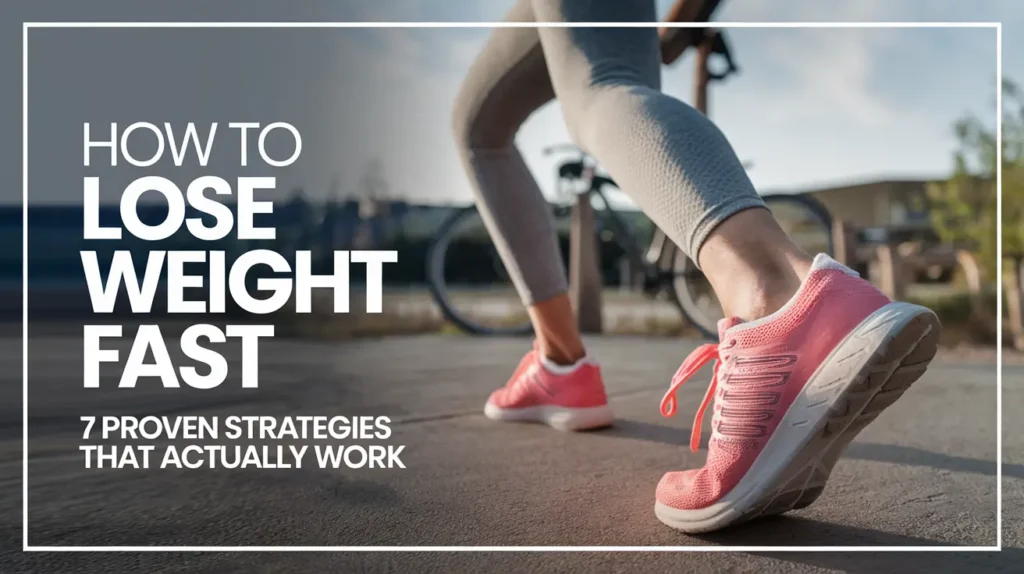Are you tired of trying countless diets that promise the world but leave you feeling frustrated and hungry? Enter intermittent fasting (IF), a flexible approach to eating that can help you shed those extra pounds while still enjoying your favorite foods. In this ultimate guide, we’ll dive into everything you need to know about intermittent fasting, from its benefits to practical tips to get you started. Let’s jump right in!
What is Intermittent Fasting?
Intermittent fasting isn’t a diet; it’s a pattern of eating. You cycle between periods of eating and fasting. Think of it like giving your digestive system a break, allowing it to reset and focus on burning fat rather than constantly processing food.
The Science Behind Intermittent Fasting
When you fast, your body undergoes several hormonal changes that make it easier to lose weight. For instance, insulin levels drop, facilitating fat burning. At the same time, levels of growth hormone may skyrocket, promoting muscle gain and fat loss. Isn’t it fascinating how our bodies work?
Popular Methods of Intermittent Fasting
There are several methods of intermittent fasting, each with its own unique rhythm. Here are some of the most popular ones:
1. 16/8 Method
This method involves fasting for 16 hours a day and eating during an 8-hour window. For many, this simply means skipping breakfast and having lunch around noon. It’s a straightforward approach that fits easily into most lifestyles.
2. 5:2 Diet
With the 5:2 diet, you eat normally for five days a week and limit yourself to around 500-600 calories on two non-consecutive days. This method can be great for those who don’t want to restrict their eating every day.
3. Eat-Stop-Eat
This method involves fasting for 24 hours once or twice a week. For example, you might fast from dinner one day to dinner the next. It can be challenging, but many find it effective for weight loss.
4. Alternate-Day Fasting
As the name suggests, this approach involves alternating between fasting days and eating days. It can be more intense but may lead to significant weight loss.
5. Warrior Diet
The Warrior Diet is all about eating small amounts of food throughout the day and feasting at night. It’s less about strict fasting and more about a specific eating pattern.
Why Choose Intermittent Fasting?
You might be wondering, “Why should I consider intermittent fasting?” Well, here are some compelling reasons:
1. Simplicity
Unlike traditional diets that require counting calories or measuring portions, intermittent fasting simplifies your eating routine. You just focus on when to eat, not what to eat.
2. Flexibility
With intermittent fasting, you have the freedom to choose your eating windows. Whether you’re a night owl or an early bird, there’s a method that can suit your lifestyle.
3. Weight Loss
Studies show that intermittent fasting can help reduce body weight and belly fat. By limiting your eating window, you may naturally consume fewer calories, leading to weight loss.
4. Improved Metabolism
Intermittent fasting can enhance your metabolism, helping your body burn calories more efficiently. Think of it as revving up your engine for better performance!
5. Mental Clarity
Many people report increased focus and mental clarity during fasting periods. It’s as if your brain gets a little boost, making you feel sharper and more alert.
Getting Started with Intermittent Fasting
Now that you’re intrigued, let’s explore how to get started with intermittent fasting.
Step 1: Choose Your Method
Pick an intermittent fasting method that aligns with your lifestyle and preferences. It’s essential to choose something sustainable for the long term.
Step 2: Prepare Yourself
Transitioning to intermittent fasting can be an adjustment. Start by gradually extending your fasting periods. For instance, if you’re doing the 16/8 method, try fasting for 12 hours and then increase it.
Step 3: Stay Hydrated
During fasting periods, it’s crucial to stay hydrated. Drink plenty of water, herbal teas, or black coffee to keep your energy levels up and reduce hunger pangs.
Step 4: Focus on Nutrition
When you do eat, prioritize nutrient-dense foods. Load up on vegetables, lean proteins, healthy fats, and whole grains to keep your body nourished and satisfied.
Step 5: Listen to Your Body
Everyone’s body is different. Pay attention to how you feel during fasting and eating periods. If you’re feeling fatigued or unwell, it’s essential to reassess your approach.
What to Eat During Eating Windows
Eating healthily during your eating windows can amplify the benefits of intermittent fasting. Here’s what to consider:
1. Lean Proteins
Incorporate sources like chicken, fish, legumes, and tofu to keep you feeling full and support muscle health.
2. Healthy Fats
Avocados, nuts, seeds, and olive oil are fantastic options that provide energy and keep hunger at bay.
3. Plenty of Veggies
Vegetables are low in calories but high in nutrients. Fill half your plate with colorful veggies to promote fullness without excessive calories.
4. Whole Grains
Opt for whole grains like quinoa, brown rice, and oats. They provide sustained energy and are rich in fiber.
5. Limit Processed Foods
Try to minimize your intake of processed and sugary foods, as they can lead to cravings and weight gain.
Common Myths About Intermittent Fasting
With any popular method, misconceptions abound. Let’s debunk some common myths about intermittent fasting.
1. You’ll Be Constantly Hungry
Many fear that fasting means feeling starved. However, once your body adjusts, hunger pangs often diminish, and you may feel more in control of your cravings.
2. It’s Not Suitable for Everyone
While intermittent fasting is safe for most, it may not be for everyone, especially those with certain health conditions. Always consult a healthcare professional before making drastic changes.
3. You Can’t Lose Weight If You Don’t Exercise
While exercise can enhance your results, many people successfully lose weight through intermittent fasting alone. It’s all about the overall balance.
4. It Slows Down Your Metabolism
Contrary to popular belief, intermittent fasting can actually boost your metabolism. Your body adapts to burning fat more efficiently during fasting.
Challenges of Intermittent Fasting
Like any lifestyle change, intermittent fasting comes with its challenges. Here are a few common ones and how to tackle them.
1. Social Situations
Fasting can feel awkward at social gatherings. Don’t be afraid to adjust your eating windows to fit your schedule, or simply enjoy the company and eat when it works for you.
2. Initial Hunger Pangs
The first few days may bring hunger and cravings. Stay committed and remind yourself that this is temporary as your body adjusts.
3. Overeating During Eating Windows
It’s easy to go overboard when it’s time to eat. Focus on portion control and mindful eating to maximize the benefits.
The Role of Exercise in Intermittent Fasting
Exercise can complement your intermittent fasting journey, but how should you approach it?
1. Timing Matters
Consider your workout schedule. Some prefer to exercise during fasting periods, while others find it easier to hit the gym after a meal.
2. Listen to Your Body
Pay attention to how your body responds. If you feel drained during workouts, it might be time to adjust your fasting or eating windows.
Tips for Success
To make the most out of your intermittent fasting experience, keep these tips in mind:
1. Set Realistic Goals
Don’t expect overnight results. Weight loss takes time and patience. Set achievable goals and celebrate small victories along the way.
2. Stay Consistent
Consistency is key. Stick to your chosen method and give your body time to adapt.
3. Keep a Journal
Tracking your progress can be motivating. Document your experiences, meals, and how you feel to stay accountable.
4. Seek Support
Find a community or buddy to share your journey with. Support can make a significant difference in staying committed.
5. Stay Educated
Keep learning about intermittent fasting and healthy eating. The more you know, the better equipped you’ll be to make informed choices.
Conclusion
Intermittent fasting can be a game-changer for those looking to lose weight without the stress of complicated diets. By understanding the different methods, benefits, and practical tips, you can embark on your intermittent fasting journey with confidence. Remember, it’s all about finding what works best for you and your lifestyle. So why not give it a try? Your body might just thank you!
FAQs
1. Is intermittent fasting safe for everyone?
Not everyone may be suited for intermittent fasting, particularly those with certain health conditions or a history of eating disorders. Always consult with a healthcare professional before starting.
2. Can I drink coffee or tea during fasting?
Yes! Black coffee and herbal teas are generally acceptable during fasting periods as they contain few or no calories.
3. Will I gain weight if I stop fasting?
Weight gain can occur if you revert to unhealthy eating habits. Maintaining a balanced diet is crucial even after you stop fasting.
4. Can I exercise while fasting?
Absolutely! Many people find they can still perform well during workouts while fasting. Just listen to your body and adjust your routine as needed.
5. How long does it take to see results from intermittent fasting?
Results can vary, but many people start noticing changes within a few weeks. Consistency and a balanced diet play significant roles in your success.



